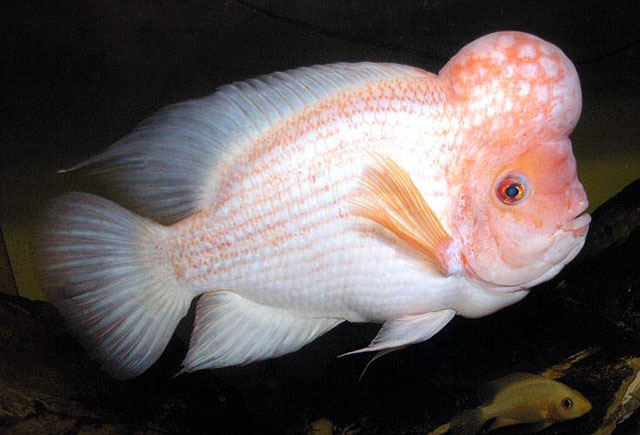| Cichlidae (Cichlids), subfamily: Cichlasomatinae |
| 24.4 cm SL (male/unsexed) |
|
benthopelagic; freshwater |
| Central America: Atlantic slope of Nicaragua and Costa Rica (San Juan River drainage, including Lakes Nicaragua, Managua, Masaya and Apoyo). |
|
This species coloration is mostly bright orange to orange-red in adults; mature males are of larger size, longer fins and with a distinct hump on their heads; aquarists usually refer to the lighter-colored, thin-lipped form as this species. |
| Lives in box-cut canals with rocky vertical sides, crevices used for spawning and protection of the young (Ref. 5723). Found in lakes; uncommon in the rivers but will penetrate the lower river valleys where the water is slow flowing or tranquil (Ref. 7335). Omnivorous, eating mostly aufwuchs, snails and small fishes (Ref. 7335); also feeds on insect larvae, worms and other bottom-dwelling organisms (Ref. 44091). Majority of this fish has normal cryptic coloration (black, gray or brown), matching the substrate for camouflage and survival purposes. About 10 % of this species is xanthomorphic, undergoing a color metamorphosis at varying stages of growth (Ref. 7335). An experimental fish being used for behavioral studies (Ref. 4537). |
|
Least Concern (LC); Date assessed: 07 November 2019 Ref. (130435)
|
| harmless |
Source and more info: www.fishbase.org. For personal, classroom, and other internal use only. Not for publication.
